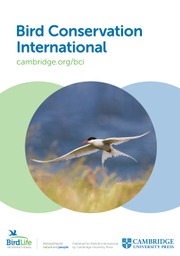No CrossRef data available.
Article contents
Assessing the spatial overlap between planned offshore wind farms and wintering waterbirds: a Baltic Sea case study
Published online by Cambridge University Press: 04 June 2025
Summary
This study presents a novel approach using machine learning, specifically Random Forest modelling, to create a sensitivity map that addresses the conflict between offshore wind farms (OWFs) and wintering waterbirds in the southern Baltic Sea. This region is crucial or of great importance for wintering species such as the Long-tailed Duck Clangula hyemalis and Velvet Scoter Melanitta fusca. In 2020, the southern and central Baltic Sea hosted approximately one million wintering birds, including over 560,000 Long-tailed Ducks (35% of the species’ biogeographical population), 230,000 Velvet Scoters (41% of the global population), and 4,500 Black Guillemot Cepphus grylle (8% of the Baltic population). Within the Polish Exclusive Economic Zone (PEEZ), 21 wind farms are planned, totalling a capacity of 17.6 GW with an estimated 1,164 turbines. To assess potential risks, a Normalised Overlap Index (NOI) was calculated for each wind farm, quantifying the level of potential threat to wintering birds. High conflict zones, such as the Southern Middle Bank and Pomeranian Bay, were identified, where wind farms significantly overlap with areas of high bird density. Although the wind farms do not intersect with Natura 2000 sites, partial overlaps with Important Bird Areas (IBAs) were noted. The method developed in this study not only addresses the challenges in the Baltic Sea but also offers potential applications in other marine and terrestrial environments. This framework provides a novel tool for evaluating and mitigating the impacts of renewable energy development on wildlife, contributing to the sustainable expansion of green energy solutions globally.
Keywords
Information
- Type
- Research Article
- Information
- Copyright
- © The Author(s), 2025. Published by Cambridge University Press on behalf of BirdLife International

